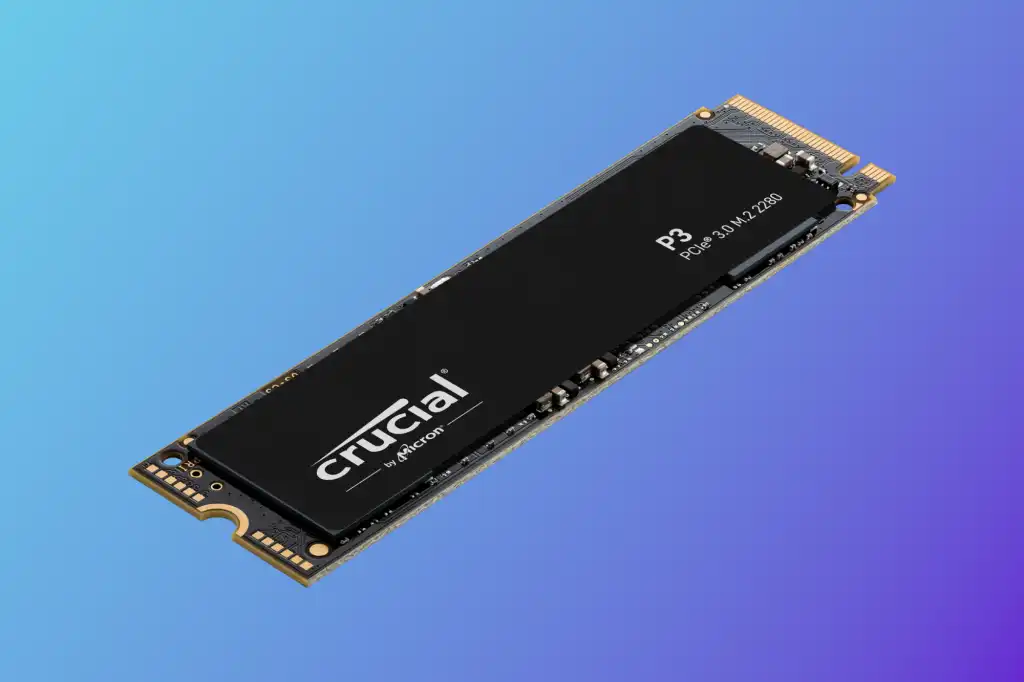Introduction of best SSD for laptop
When it comes to upgrading the storage of your laptop, solid-state drives (SSDs) are a popular choice due to their superior speed, reliability, and performance compared to traditional hard disk drives (HDDs). SSDs utilize flash memory technology, eliminating the moving parts found in HDDs, resulting in faster boot times, quicker application loading, and improved overall system responsiveness.
The best SSD brands and their popular models for laptops in India:
Samsung:
Samsung 860 EVO:
This SATA-based SSD offers excellent performance and reliability, making it a popular choice for both casual users and professionals.
Samsung 970 EVO:
As an NVMe SSD, it delivers faster speeds and is ideal for power users and gamers who require high-performance storage.
Crucial:
Crucial MX500:
This SATA SSD is known for its balance of performance, reliability, and affordability. It offers good read and write speeds, making it suitable for everyday computing tasks.
Western Digital:
WD Blue:
With its solid performance and competitive pricing, the WD Blue SSD is a reliable option for users seeking an upgrade over traditional hard drives.
WD Black:
Aimed at gamers and enthusiasts, the WD Black series offers higher performance and endurance, making it suitable for demanding tasks and gaming.
Kingston:
Kingston A2000:
This NVMe SSD offers impressive read and write speeds, making it suitable for users who require fast data transfer rates for tasks like video editing or gaming.
Kingston UV500:
It provides a good balance between performance and affordability, making it an attractive option for budget-conscious buyers.
SanDisk:
SanDisk Ultra 3D:
This SATA-based SSD offers good read and write speeds, along with reliable performance. It’s suitable for everyday use and offers an affordable storage upgrade.
SanDisk Extreme Pro:
Aimed at professionals and enthusiasts, this NVMe SSD provides high-performance speeds for demanding workloads and gaming.
Adata:
Adata XPG SX8200 Pro:
This NVMe SSD offers excellent performance with high read and write speeds, making it suitable for power users and gamers.
Adata SU800:
With its competitive pricing and reliable performance, the SU800 is a popular choice for users looking for an affordable SSD upgrade.
Seagate:
Seagate BarraCuda:
This SATA-based SSD offers good performance and reliability, making it a suitable option for users seeking a balance between speed and cost.
Seagate FireCuda:
Aimed at gamers, the FireCuda series provides fast loading times for games and offers larger storage capacities compared to some other SSDs.
Intel:
Intel 660p:
This NVMe SSD offers good performance at an affordable price, making it a popular choice for budget-conscious buyers.
Intel 760p:
With its higher performance and endurance, the 760p is suitable for power users and professionals who require fast and reliable storage.
When selecting an SSD, consider factors like the storage capacity that meets your needs, the interface (SATA or NVMe), read and write speeds, endurance (TBW – Total Bytes Written), and warranty. It’s also helpful to read customer reviews and compare prices across different retailers to find the best SSD for laptop in terms of performance, reliability, and value for money.
Are there any security features to consider in SSDs for laptops?
Yes, there are security features to consider when choosing the best SSD for laptop.
Self-Encrypting Drives (SED):
SEDs are SSDs that have built-in hardware encryption capabilities. They use an encryption algorithm to automatically encrypt all data written to the drive, ensuring that your data remains secure even if the drive is removed or stolen. SEDs usually require authentication, such as a password or encryption key, to access the data.
Hardware-based Encryption:
Some SSDs feature hardware-based encryption engines that offload the encryption and decryption processes from the CPU. This helps to minimize performance impact while providing robust data security. These SSDs often support industry-standard encryption protocols like TCG Opal or IEEE 1667.
Trusted Computing Group (TCG) Opal:
TCG Opal is a set of specifications that define a standardized approach to data encryption and security in SSDs. SSDs compliant with the TCG Opal specification provide features such as hardware-based encryption, secure boot, and authentication, ensuring that data stored on the drive is protected.
ATA Security Features:
ATA (Advanced Technology Attachment) security features are built into the firmware of many SSDs. These features allow you to set a password to restrict access to the drive or implement secure erase functions to securely erase data from the SSD.
Secure Erase:
Secure erase is a feature that allows you to securely erase all data on the SSD, ensuring that it cannot be recovered. This feature is useful when you want to dispose of or repurpose the SSD while ensuring that your data remains protected.
Firmware Security Updates:
Regular firmware updates from the SSD manufacturer can help address security vulnerabilities and improve the overall security of the drive. Checking for firmware updates and applying them when available is an important step in maintaining the security of your SSD.
When considering security features in SSDs, it’s essential to evaluate your specific security needs. If data security is a top priority, opting for an SSD with self-encrypting drive (SED) capabilities or hardware-based encryption can provide an added layer of protection for your sensitive data. Additionally, considering features like secure erase and firmware security updates can further enhance the security of your SSD and the data stored on it.
How to optimize the performance of an SSD in a laptop?
Optimizing the performance of an SSD in your laptop can help you get the most out of its speed and efficiency.
Enable AHCI Mode:
Ensure that your laptop’s BIOS is set to AHCI (Advanced Host Controller Interface) mode instead of IDE (Integrated Drive Electronics) mode. AHCI mode enables advanced features and optimizations specific to SSDs, maximizing their performance.
Update Firmware:
Regularly check for firmware updates for your SSD from the manufacturer’s website. Firmware updates often include performance improvements, bug fixes, and enhanced compatibility. Follow the manufacturer’s instructions to update the SSD firmware correctly.
Enable TRIM:
TRIM is a command that helps the SSD maintain optimal performance by informing it which data blocks are no longer in use. Ensure that TRIM is enabled on your laptop’s operating system. Most modern operating systems, such as Windows 10 and macOS, enable TRIM by default.
Disable Indexing:
SSDs do not benefit from the indexing feature as much as traditional hard drives do. Disabling indexing for the SSD drive can reduce unnecessary write operations and improve performance. To disable indexing, go to the drive properties and uncheck the “Allow files on this drive to have contents indexed” option.
Disable Superfetch and Prefetch:
Superfetch and Prefetch are Windows features that aim to speed up application loading times. However, they can cause unnecessary read and write operations on an SSD. To disable these features, open the “Services” application, locate “Superfetch” and “Prefetch” services, and set them to “Disabled”.
Adjust Power Settings:
Configure your laptop’s power settings to ensure that the SSD operates optimally. For example, set the power plan to “High Performance” to prevent the SSD from entering low-power states too frequently, which can impact performance.
Also read:- What Are The Recommended Specifications For A Refurbished Laptop?
Conclusion
In conclusion, optimizing the performance of the best SSD for laptop can significantly enhance its speed, responsiveness, and efficiency. By following the tips mentioned above, such as enabling AHCI mode, updating firmware, enabling TRIM, disabling indexing, Superfetch, and Prefetch, adjusting power settings, you can ensure that your SSD operates at its best.
Remember to regularly check for firmware updates from the manufacturer and apply them when available to benefit from performance improvements and enhanced compatibility. Additionally, it’s crucial to maintain a healthy storage environment by keeping your SSD well-organized, avoiding excessive data fragmentation, and managing storage space efficiently.



